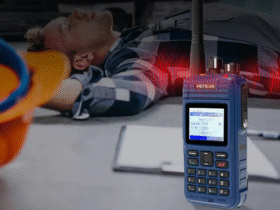Ultracentrifuges are advanced scientific tools used to separate particles based on their density, making them invaluable in various research and industrial applications. These high-speed differential ultracentrifugations play a crucial role in fields like biochemistry, molecular biology, and medicine, where precise separation of components like proteins, viruses, and cellular organelles is essential.
Whether you’re a researcher or simply curious about the science behind ultracentrifugation, this guide will walk you through everything you need to know about their mechanics, uses, and benefits.
What Is an Ultracentrifuge?
An ultracentrifuge is a sophisticated laboratory tool that operates at extremely high speeds to separate particles based on their mass and density. Capable of spinning samples at speeds exceeding 100,000 revolutions per minute (RPM), these centrifuges apply forces of hundreds of thousands of times the Earth’s gravity. This immense centrifugal force allows for the separation of microscopic and submicroscopic particles that are too small for regular centrifuges to handle.
Key Components of an Ultracentrifuge
1. Rotor – The part of the centrifuge that spins the samples.
2. Chamber – The compartment where the rotor and samples are placed.
3. Vacuum System – Reduces air resistance inside the chamber, preventing overheating and allowing for higher speeds.
4. Cooling System – Maintains a consistent temperature during operation, crucial for temperature-sensitive samples.
5. Control System – Digital or analog interface to manage speed, time, and temperature settings.
How Does an Ultracentrifuge Work?
Ultracentrifuges operate on the principle of centrifugal force. When a sample tube is spun at high speeds, particles within the tube experience a force that moves them away from the axis of rotation. Heavier particles sediment faster and accumulate at the bottom of the tube, while lighter particles remain suspended higher up. This separation allows scientists to isolate different components of a mixture efficiently.
The process can be fine-tuned by adjusting the speed, time, and temperature, depending on the specific requirements of the sample being analyzed. In addition to the basic mechanical separation, ultracentrifuges often come with software that helps monitor the progress and ensures the safety of the samples during the operation.
Types of Ultracentrifuges
Ultracentrifuges come in two main types, each suited for specific applications:
1. Analytical Ultracentrifuge (AUC)
Analytical ultracentrifuges are primarily used for research purposes, allowing scientists to study macromolecules like proteins and nucleic acids. These devices provide real-time monitoring of the separation process, offering insights into molecular weights, interactions, and structural properties. The data generated can be used to draw conclusions about the physical properties of the molecules under study.
Common Applications:
– Studying protein-protein interactions
– Measuring molecular weight distributions
– Investigating virus structure
2. Preparative Ultracentrifuge
Preparative ultracentrifuges are designed for separating larger quantities of material. Unlike analytical ultracentrifuges, they focus on high-throughput separation without real-time analysis. These machines are often used in industries where the preparation of large batches of pure samples is required.
Common Applications:
– Cell fractionation
– Purification of viruses and organelles
– Separation of blood components
Applications of Ultracentrifuge Technology
Ultracentrifuges have widespread applications across various scientific fields. Their precision and efficiency make them indispensable in numerous industries.
1. Biotechnology and Biochemistry
Ultracentrifuges are critical in protein isolation, virus purification, and DNA/RNA analysis. They allow for the precise separation of biological macromolecules, enabling researchers to study their structure and function at the molecular level.
2. Pharmaceutical Industry
In the development of vaccines and biologics, ultracentrifuges play a vital role in purifying viruses and viral vectors. They are also used to fractionate blood and plasma components, which are crucial for manufacturing therapeutics and diagnostic kits.
3. Clinical Diagnostics
In clinical labs, ultracentrifuges are used to separate blood components like serum and plasma for testing and analysis. They are instrumental in the preparation of samples for diagnostic tests and therapeutic procedures.
4. Nanotechnology
Nanoparticles are challenging to separate due to their minuscule size. Ultracentrifuges provide the necessary force to effectively isolate and characterize these particles, facilitating research and development in nanomaterial science.
Benefits of Using an Ultracentrifuge
1. High Precision – Ultracentrifuges offer unparalleled precision in separating particles based on their size and density.
2. Versatility – They are used across various disciplines, from biological research to nanotechnology and medicine.
3. Efficiency – Capable of handling large sample volumes, they allow for quicker and more efficient separation processes.
4. Temperature Control – Many ultracentrifuges include temperature regulation to prevent sample degradation, especially in sensitive biological applications.
How to Operate an Ultracentrifuge Safely
Operating an ultracentrifuge requires adherence to strict safety guidelines to prevent accidents and ensure the protection of both the user and the samples.
– Ensure Proper Balancing: Before starting the machine, ensure that all sample tubes are balanced correctly. Even slight imbalances can cause the rotor to malfunction or result in damage.
– Use Proper Tubes: Always use tubes designed for high-speed centrifugation. Substandard tubes may break under high forces.
– Monitor Temperature: If the machine has temperature control settings, ensure that samples requiring cooling are maintained at optimal temperatures.
– Regular Maintenance: Routine maintenance is essential to ensure the longevity and accuracy of the ultracentrifuge.
FAQs on Ultracentrifuge
1. What is the difference between a centrifuge and an ultracentrifuge?
A centrifuge operates at lower speeds and is typically used for less precise separations. An ultracentrifuge, on the other hand, operates at much higher speeds (up to 100,000 RPM) and is used for separating extremely small particles, such as viruses and macromolecules.
2. How does an ultracentrifuge separate particles?
Ultracentrifuges separate particles based on their size, shape, and density by applying high-speed centrifugal force. The heavier particles sediment faster, while lighter ones remain suspended.
3. What are the applications of an ultracentrifuge?
Ultracentrifuges are used in fields like biotechnology, pharmaceuticals, clinical diagnostics, and nanotechnology. They are crucial for protein isolation, virus purification, blood fractionation, and nanoparticle separation.
4. Can ultracentrifuges handle temperature-sensitive samples?
Yes, many ultracentrifuges come with temperature control features that allow samples to be cooled during the separation process, which is important for temperature-sensitive biological materials.
5. How should I maintain an ultracentrifuge?
Regular cleaning, checking for rotor imbalances, and ensuring proper lubrication of moving parts are essential for maintaining an ultracentrifuge. Additionally, it’s important to follow the manufacturer’s recommended maintenance schedule.
Conclusion
Ultracentrifuges have made significant advancements possible in both research and industry. These machines, from protein purification to nanoparticle analysis, offer the precision needed to achieve reliable outcomes.
Torontech’s TT-UltraC30 Ultra-High Speed Refrigerated Centrifuge is a reliable option for those looking to enhance their research or production processes. Offering accuracy and efficiency, this technology helps ensure productivity and consistency, supporting even the most demanding applications.
With the TT-UltraC30, scientists and industries alike can take full advantage of the potential offered by modern separation technologies.















Leave a Reply